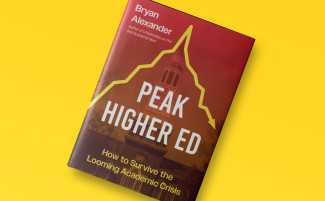Over the past few issues, the journal
American Jewish History has introduced a new feature to each issue—"Signposts: Reflections on Articles from the Journal’s Archive." These articles give scholars a chance to "reflect upon some of the most significant contributions that the journal has made to the field of American Jewish history," according to
AJH editor Dianne Ashton. She joined us to talk about this opportunity to reflect on more than 120 years of scholarship from the journal.
 How did the development of Signposts come about?
How did the development of Signposts come about?
The idea for our new feature, Signposts, emerged in a meeting of the Executive Board of the Academic Council of the American Jewish Historical Society. Our journal,
American Jewish History, was founded along with the AJHS in 1892, and is the oldest ethnic studies journal in the country. As such, its contents reflect the changing attitudes and concerns that energized American Jews over that long period. The journal is not only a source for scholarship about American Jews, it reflects more than a century of changes in scholarship itself. Our Executive Board is comprised of historians who frequently use the journal in our own research, and we hit upon the idea of asking senior scholars to write pieces in which they reflect upon the historical significance of various items that have appeared in the journal.
With more than 120 years of history, how hard is it to narrow down areas which deserve attention?
Each scholar who writes a piece for Signposts evaluates the journal’s articles through the lenses of his or her own special area of interest. For example, Hasia R. Diner wrote about what two articles in our journal written during World War I can tell us about Jewish concerns and activities during that war. Our next issue will have a Signposts piece by Jeffrey S. Gurock in which he points out the significance of the first item to appear in the journal that discussed the new immigrants from Eastern Europe. Each scholar chooses their own topic based upon their own interests.
What have you learned from being involved in this project as editor?
Editing this journal offers me many opportunities to learn more about American Jewish history, as you would expect. The Signposts feature has taught me—and our readers—more about the changes that have occurred in the ways we approach scholarship and the evolving standards in academic writing. It is also a chance for me to reflect upon the ways the Editor’s job has changed.
What has been the feedback from readers about Signposts?
Response to the Signposts feature has been very positive. It is a way for some of our senior scholars to share their own perspective on items that truly interest them, items that they have run across while doing their own work that other scholars might not have noticed.
How long do you anticipate Signposts continuing?
I expect that it will continue as long as our readers continue to appreciate it and senior historians are interested in writing for it.
Dianne Ashton, a professor in the Department of Philosophy & Religious Studies at Rowan University, is the first female editor of American Jewish History.
Her most recent book is Hanukkah in America: A History.



